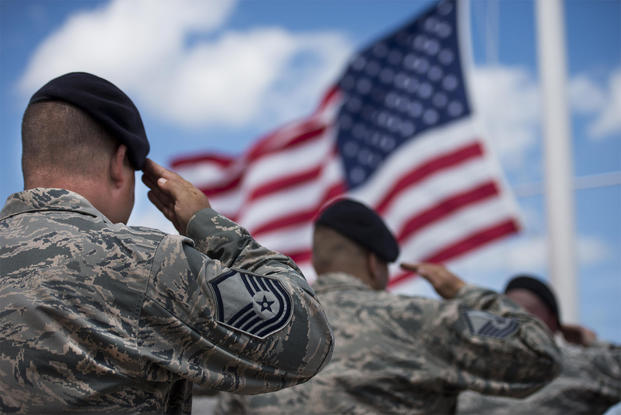One of the most commonly expressed challenges hiring managers face when trying to recruit or hire military veterans is understanding the military resume. The following is an excerpt from my book, Engaging with Veteran Talent: A quick and practical guide to souring, hiring, onboarding, and developing Veteran employees:
Related Articles:
Personality Assessment Key to Skills Translation and Vet Recruitment
Reading the Resume
Hiring managers are typically not trained to read a military resume. If the resume is not “civilianized,” it can appear full of acronyms and terminology that make a civilian’s eyes glaze over. What does being an E-6 mean? What does it mean to be an Airborne Cryptologic Language Specialist in the Air Force, and how is it relevant for this open position?
If your recruiters and hiring managers encounter military resumes, some tips to efficiently review the resume for relevancy include the following:
- Allow time to read the resume. Most recruiters scan resumes quickly, looking for keywords and highlights. Instead, spend a few more minutes reviewing when you see that the resume includes military experience.
- In reviewing a military resume, look at tangible results and benchmarks. Scan for dollar amounts attached to results, accomplishments in leadership, and results delivered. (Don’t be surprised if you see large dollar amounts and personnel experience at a young age.)
- Consider length of service by looking for service dates. A Veteran with twenty-plus years of military service will likely show greater results, milestones, and training than someone medically discharged after three years of duty. Both candidates potentially offer great skills, qualities, and value to the company.
- Consider deployments. While not an indicator of resiliency, multiple deployments can point to flexibility, adaptability, and increased skills. Fewer deployments can showcase longer-term assignments or different levels of responsibility during those assignments.
- Read the cover letter. Veterans are encouraged to keep their resumes tactical and express goals and values in the cover letter. Encourage your recruiters and hiring managers to read the cover letters of Veteran job candidates, and consider the totality of the cover letter/resume package.
You can remind military Veterans that the resume is simply a tool in the toolkit of the transition. When Veterans support their experience and work history with examples of their passions, vision, and talents, the resume becomes more a reflection of who they are and where they can add value in the company.
Understanding Military Career Progression
Military career placements can follow the rule of two-up, two-down. This means for certain jobs, especially those that are technical, it is expected that the service member be able handle the responsibilities two levels above their own grade, and will roll up their sleeves to accomplish the mission by working at least two levels below their own.
As you think about military career progress, consider how this example could correspond to a civilian career track in your industry or organization:
1. First, you serve as a Platoon Leader (2nd or 1st Lieutenant) managing and directing 50 people. That’s like being a manager, supervisor, or project officer in the civilian world.
2. Then you are a Company Commander (Captain), managing and directing three to four Platoons and a small headquarters section, totaling 150-180 people. That’s like being a senior manager, senior supervisor, or project manager in the civilian world.
3. Then you become a Battalion Commander (Lieutenant Colonel), responsible for managing and directing four to six companies totaling 750-800 people. That’s similar to being a CEO of a small company.
4. Next, you become a Brigade Commander (Colonel), responsible for managing and directing four to seven battalions totaling 3,500-5,000 people. That’s like being a CEO of a medium-sized company.
There are variances in the number of people you’ll supervise and direct, because there are many kinds of organizations in the military. For example, infantry platoons, companies, battalions, and brigades have different numbers than armor (tank), artillery, aviation, engineer, logistics, signal, and military intelligence platoons/companies/battalions/brigades.
Other examples of military ranks and duties and how they might equate to a civilian position include:
| Someone who served as a: | Could be considered for a role as: |
| Senior Field Grade Officer | Chief Executive Officer (CEO), Director, Chief Operating Officer (COO), Deputy Chief Administrator |
| Field Grade Officer | Executive Officer, Deputy Director, Operations Manager |
| Company Grade Officer | Operations Officer, Program Administrator |
| Commander | Senior Personnel and Program Manager |
| Warrant Officer | Senior Technician, Technical Advisor |
| Senior NCO | Technical Advisor, Division Supervisor |
| First Sergeant | Group Supervisor, Senior Advisor, Group Manager |
| NCO | Manager, Foreman, Technical Supervisor |
| Platoon Sergeant | First Line Supervisor, Training Instructor |
| Personnel Specialist | Administrative Clerk, HR professional, training, staffing |
| Supply/Logistics | Shipping, Receiving, Inventory Control |
| Team/Squad Leader | Team Supervisor, Trainer |
| Network or Intel Specialist | IT specialist, analyst, corporate affairs professional |





